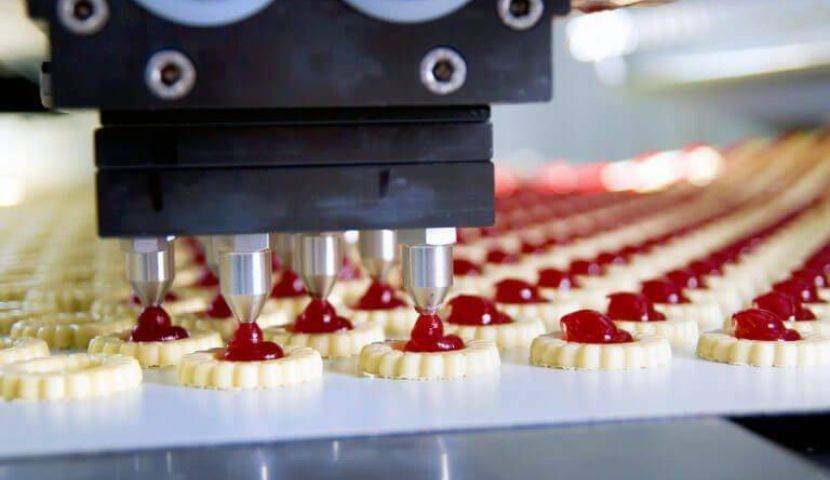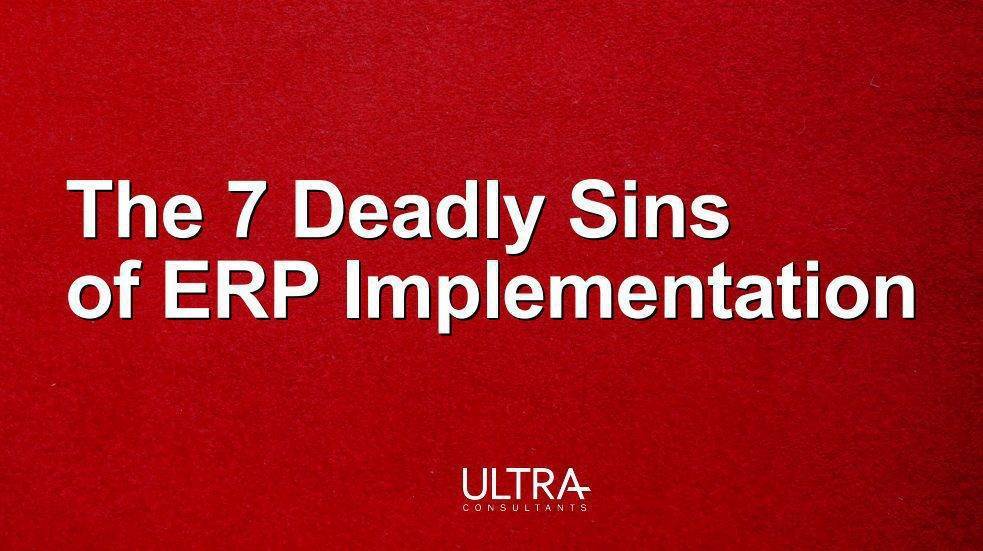Food and Beverage ERP: What’s the Best Functional Fit?
Food and beverage ERP systems are designed to help processors meet the unique challenges they face, especially in the areas of recipe management, quality, lot track-and-trace, document control, compliance and other key areas.
When it comes to food and beverage ERP projects guided by Ultra’s independent ERP consultant team, we see many processors relying on outdated, stand-alone systems, and siloed solutions to handle these key functions. Frequently organizations are depending on manual spreadsheets, resulting in error-prone and inefficient processes.
Today’s top processors go beyond technology selection and narrow the focus to identify ways for improving business processes that are specific to this sector.
Purpose-built solutions address industry-specific processes and business requirements.
Noted here are the main functional areas that food and beverage processors need to address when seeking a food and beverage ERP solution.

Recipe Management
All manufacturing companies are defined by the products they produce, but food and beverage companies face a more stringent expectation in this area. Each recipe ingredient not only impacts the taste of the product, but also the nutritional value, a metric monitored strictly by numerous governmental regulatory agencies. Food and beverage ERP solutions must offer the following feature functions to aid in recipe management:
- Version control of items such as batch sheets and recipes/formulas which allows the processor to strictly manage which version is to be used in production.
- Formulation helps manage which ingredients are being used to create the product, meeting any requirement to calculate nutritional values that result from the formulation.
- Alternate and reverse BOMs assist the manufacturer in quickly and efficiently identifying other raw materials that can be substituted if an out-of-stock is encountered.
Also important is multi-part formulation (pre-blend added to a main blend), in addition to closely monitoring allergens and kosher items labeling requirements. Stringent requirements related to allergens and food coloring greatly impact the optimal, least cost scheduling of processing.
When It comes to ERP selection, it’s important to consider features to monitor potency, volume, and variable weights when developing formulas, as well as the ability to adjust formulas on the fly to account for concentration variations.
Inventory Control
Inventory control addresses how the product is stored within the warehouse after production. Once the product has been made according to the recipe, it is extremely important for a food and beverage ERP solution to monitor the storage of the product to ensure an efficient packaging process. Among the specific functions that need to be monitored are:
- Lot Control
- FEFO/FIFO – First Expiration First Out/First in First Out
- Expiration date management
- Shelf life
- Barcoding and use of technology (e.g., RF) to increase accuracy of information
In addition to these items which are covered by food and beverage ERP, kitting is also a process that requires extensive monitoring. Kitting is the grouping together of a predefined group of items. It is essential to the food and beverage process because clients frequently order multiple ingredients to create one product. The ability to create and track kits in a food and beverage ERP system is imperative.
Quality
With any manufactured product, quality is essential for customer satisfaction. When food and beverage ERP solutions are capable of quality control in the following areas, manufacturers thrive:
- Management of allergens, colors, gluten-free, kosher, etc.
- Testing by item, customer, vendor
- Incoming inspections
- Release control and goods delivery, based on audits/checks
Planning and Scheduling
Food and beverage manufacturers must consider multiple tasks when planning and scheduling manufacturing runs. For one, they need to have the ability to manage runs based on the many constraints, like allergens, and change-overs that are unique to food and beverage production.
A change-over occurs when the processor moves from making one product in a work center onto another product. Sometimes this change-over could be as simple as brushing down the machine. Frequently, however, it involves taking all of the equipment apart and completely washing it down to sanitize it. This is especially important for manufacturing products containing known allergens. An enterprise food ERP solution must be nimble enough to accommodate these requirements.
Forecasting
Forecasting is important for many reasons, but especially for processors to allocate an accurate budget. Food and beverage ERP solutions need to address this area while taking these food/beverage related issues into consideration:
- Seasonality – The demand for certain products changes with the seasons, and a food and beverage manufacturer needs to account for this fluctuation.
- Customer Forecasts – Manufacturers need to be aware of the forecast cycles of their customers in order to know how much of their product to produce. A right fit ERP must integrate customer forecasts.
Reporting
Food and beverage processors are required to adhere to strict regulations and achieve certain levels of certification. Some examples of groups and documentation that detail these regulations and certifications include:
- British Retail Consortium (BRC)
- FDA’s Code of Federal Regulations Title 21 (CFR)
- Global Food Safety Initiative (GFSI)
- Hazard analysis and critical control points (HACCP) certification
- Good Manufacturing Practiceregulations promulgated by the U.S. Food and Drug Administration (GMP)
- Safe Quality Food (SQF)
Additional Functional-Fit Requirements
Additional critical requirements of food and beverage ERP systems, for those organizations seeking business process transformation, go beyond the areas noted above, address the following functional areas:
- Customer relationship management
- Quoting and estimating
- Order Processing Available-to-Promise (ATP) and Capable-to-Promise (CTP)
- Forecasting and demand planning
- Materials management
- Mixed mode manufacturing
- Lean manufacturing
- Supply chain management
- Advanced manufacturing planning
- Warehouse management
- Plant equipment optimization
Final Thoughts – Food and Beverage ERP Functional Fit
For today’s top processors, the considerations around food and beverage ERP must go beyond technology selection and instead encompass improving business processes that are specific to the sector.
Looking for further insight? Contact Ultra’s team for a closer look at industry-specific processes and business requirements.
The 7 Deadly Sins of ERP Implementation
Some mistakes are just bad strategic or financial decisions. Some are the inevitable consequence of situational or organizational factors. Some, however, are the result of process-oriented or people-centric choices – and are easily avoided. These are The Seven Deadly Sins of ERP Implementation.
Table of Contents
More ERP material...
AI in Food and Beverage Manufacturing
Discover how AI is revolutionizing food and beverage manufacturing, enhancing quality, reducing…
How ERP for Quality Control Eliminates Manual Documentation Chaos
This post will examine why managing quality records outside of an ERP…
Assessing Your AI Maturity
This article breaks down how businesses can measure their AI maturity to…




